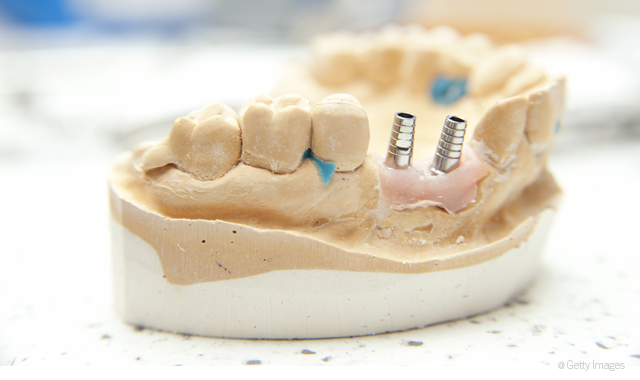Study finds microthreaded dental implants may preserve crestal bone
Researchers investigated how the design of an implant affects the mouth.

Tooth loss is not simply an aesthetic problem for adults. It can have severe consequences for overall dental health, including complications with speech, eating and overcompensation of the mouth due to the deficiency. To combat these issues, people often turn to dental implants to replace lost teeth. As the number of tooth replacements increases, it is imperative to design an implant that will uphold the integrity of an individual’s mouth structure.
Researchers from the University of Dammam in Dammam, Saudi Arabia, and the University of Kentucky in Lexington, Kentucky, published a study in the Journal of Oral Implantology that investigated how the design of the implant affects the mouth. Specifically, if using a microthreaded-neck design would preserve more of the crestal bone, the part of the bone at the top (or “neck”) of the implant that supports the replacement teeth. The researchers conducted a systematic review of 23 articles to test their hypothesis.
Trending research: New discovery could reduce the dental implant failure rate
These articles were derived from three electronic scientific databases and published between January 1995 and June 2016. The review analyzed the effectiveness of using an implant with a microthreaded-neck design versus the more traditional machine- or rough-surface implants. The researchers concluded that the addition of deeper threads on the implant allowed for more stabilization between the implant and the bone, especially with weaker bones. They also noted that the threads created more bone-to-implant contact and allowed for more of the bone to be preserved.
The researchers stated: “This research was one of the early projects that provide high evidence from literature on the design of the most current generation of dental implants. That includes a continuous micro-rough or nano-rough surface extending up to the implant neck, along with microthreads in the cervical region. So, the aim of this systematic review was to evaluate and analyze the effect of a microthreaded-neck implant on [crestal bone loss], as determined by various clinical trials.”
This study shows that thread geometry does affect the amount of stress and strain that is put on the implant, and that crestal bone loss can be minimized. This finding helps practitioners to make a more informed decision when choosing a type of implant for their patients. The researchers believe that additional randomized controlled trials are necessary to evaluate how the microthread implant will affect different types of bone loss under different implantation techniques.
The study, titled “Microthreaded Implants and Crestal Bone Loss: A Systematic Review,” appeared in the Journal of Oral Implantology.
University of Texas Health Science Center San Antonio to Launch Center for Regenerative Sciences
June 17th 2024The center aims to translate preclinical discoveries into therapies for dental and craniofacial diseases, leveraging the school’s expertise in stem cell-based treatments and 3D printing technologies.